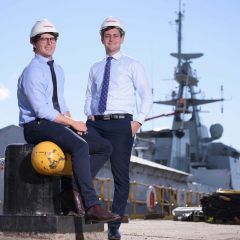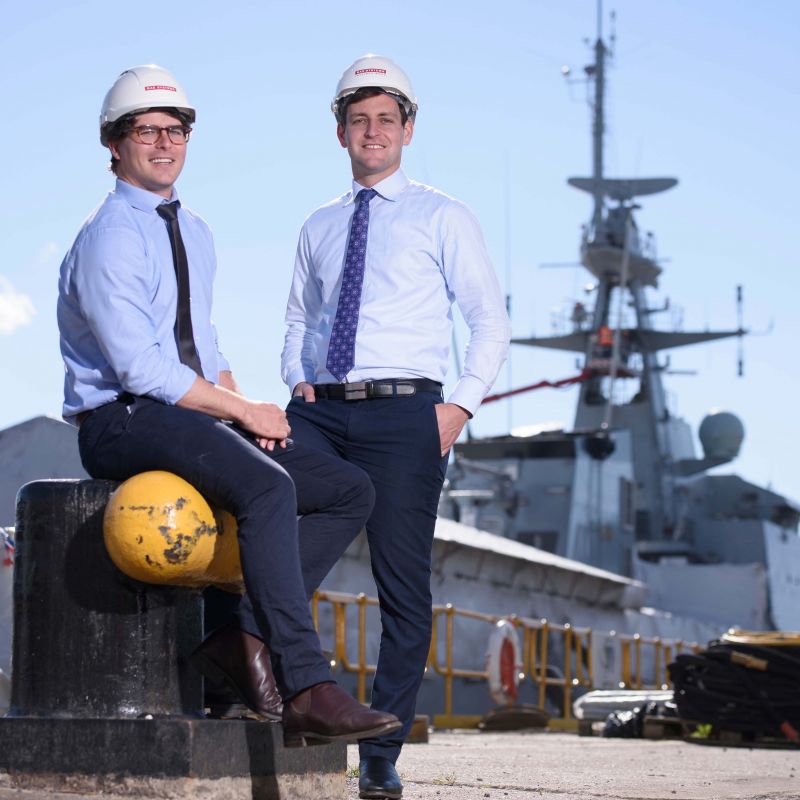It’s a long way from the rural landscapes of Dalby in regional Queensland to the headquarters of one of the world’s biggest defence and security companies in Scotland.
That’s the path travelled by naval architect Joseph Cook, thanks to an AMC information stand at a high school careers expo in Brisbane.
The information he picked up that day piqued his interest in maritime engineering and led to a move to Launceston in 2007 to study a Bachelor of Engineering (Naval Architecture) at AMC.
After graduating in 2011, Mr Cook began work as a Naval Architect for BAE Systems Australia at its Williamstown shipyard, working on its Landing Helicopter Dock program.
In 2016, he was seconded to the BAE Systems headquarters in Scotland as part of the company’s program for engineers under 30 to develop their skills and experience working with the world’s leading warships.
As a Principal Naval Architect with BAE, Mr Cook works within the resident design team developing the Australian Future Frigate concept in support of the Australian SEA5000 Future Frigate program.
Their work centres on ensuring the anti-submarine warship – the Global Combat Ship-Australia – which they are offering as part of the SEA5000 program will meet Australian Government and Royal Australian Navy requirements.
“In my role I am constantly exposed to a diverse range of challenges which keeps me on my toes and being part of this design team allows me to gain experience which isn’t possible in Australia,” Mr Cook said.
He is excited about being involved in an industry that is set to boom as Australia embarks on its quest to build the next generation of submarines, frigates and patrol boats.
“The naval shipbuilding industry appears to have a bright future in Australia, so hopefully I can continue to play a role in future naval ship builds,” he said.
Mr Cook attributes much of his success to his decision to move to Tasmania to study at AMC and access its world-class facilities.
“Studying on campus at Launceston allowed me access to all the facilities such as the Towing Tank, Cavitation Tunnel and Model Test Basin and the small class sizes allowed a positive environment for interaction with the lecturers and staff,” he said.
“As my career progresses, I continue to find practical uses for the knowledge I gained at AMC. These tools give me the ability to tackle real-world engineering issues in support of significant naval projects.”
And with international and local opportunities growing, he’s encouraging others to consider the Naval Architecture degree.
“My degree at AMC has given me a solid foundation in which to build a career and allowed me the opportunity to work on large scale naval projects both within Australia and abroad. If that sounds like something you’re into, AMC will help you get there.”
Published on: 13 Dec 2017

